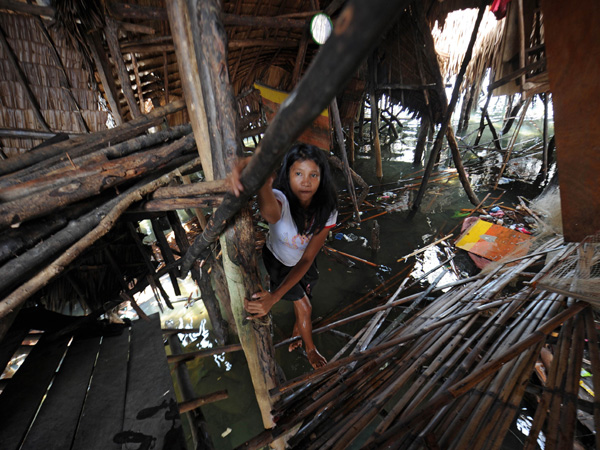No relocation sites for villagers in high-risk areas
TACLOBAN CITY—People living in areas considered high risk for earthquakes, tsunamis and even floods in municipalities in Eastern Samar have no safe place to go to when disaster strikes because their officials have not prepared relocation sites for them.
“This is our problem. But I guess our local leaders are doing their best to address this problem,” Perry Balase, provincial risk reduction management officer, said in a phone interview Monday.
On Friday, a 7.6-magnitude earthquake hit Eastern Visayas, forcing tens of thousands of people living in coastline or low-lying areas to leave their houses and seek safe and higher ground after the Philippine Institute of Volcanology and Seismology (Phivolcs) issued tsunami Alert No. 3.
On Monday afternoon, a 5.9-magnitude earthquake shook central Mindanao and Zamboanga City. But Phivolcs Director Renato Solidum told reporters in Manila that the movement of the Cotabato Trench was independent of Friday night’s movement of the Philippine Trench, the system where Eastern Samar belongs.
Mayor Neil Alvarez of Oras town said the residents had returned to their homes but still nervous of another earthquake occurrence.
Article continues after this advertisement“But I am happy that as a whole, we’re all right. There was no report of casualty or even loss of lives because of the earthquake,” Alvarez told the Inquirer in a phone interview.
Article continues after this advertisementAlthough the municipality had already mapped out areas for temporary relocation during disasters, he said, it still has no permanent shelter. “Most of the areas that we could use as permanent relocation sites are privately owned,” he added.
Alvarez noted that members of the local quick response team had been trained to handle a disaster situation. “In fact, during the earthquake, all of them went to the various barangays, including those in the interior parts of Oras, to guide the villagers on what to do,” he said.
Balase said the proactive stance of the local government units in conducting earthquake drills would help minimize, if not avoid, possible damage to lives and properties.
A week before Friday’s earthquake, Oras conducted an earthquake drill, the official said.
Exequiel Dumaguin, operations officer of the regional Office of Civil Defense (OCD), said the regular earthquake and tsunami drills conducted by the OCD had helped prepare the residents in areas hit by the earthquake and placed under a tsunami alert.
“Preparation always plays a vital role,” Dumaguin said.
Myra Dolina of the Phivolcs station based in Palo, Leyte, said aftershocks were expected to continue for at least a month.
Solidum said that as of 4 p.m. yesterday, 403 aftershocks had been recorded in Eastern Samar, which falls under the Philippine Trench.
“With that kind of magnitude, we expect several aftershocks although not as strong. But this should not make us complacent. We should always be alert at all times as we do not know when another earthquake will strike us,” she said.
When Tacloban City shook on Friday, more than 1,000 people went to Kanhuraw Hill, one of the elevated areas, to seek safe ground. But some did not leave their houses, Mayor Alfred Romualdez said.
“They chose to risk their lives for fear that once they return to their homes, they will find their homes empty [of their belongings],” Romualdez said. With a report from Jeannette I. Andrade in Manila
